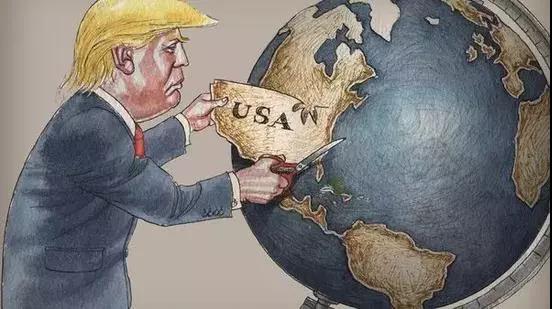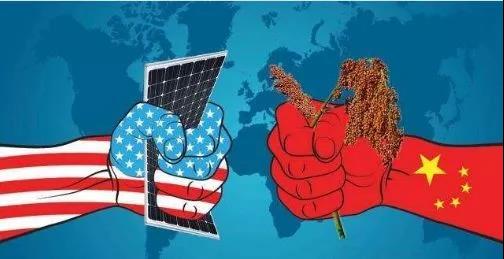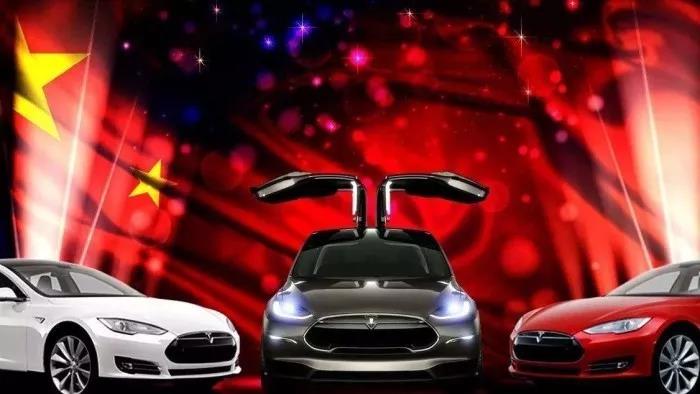
By Edward Tse and Josie Tai
July 16th, 2018
On July 6th, President Trump’s tariff on $34bn of Chinese imports, ranging from water boilers and lathes to industrial robots and electric vehicles, marked the escalation of the tit-for-tat trade war with Beijing. In retaliation, Beijing immediately raised tariffs on a list of US goods that include soybeans, seafood, and crude oil.
Some analysts point to the falling trade imbalance and weakening Chinese currency, as evidence that the US has the more to gain and can weather through the short-term negative consequences of a trade war. Nevertheless, the real issue of a full-fledged trade war is not about who will gain, but that who will lose, and the answer is everyone. A brief overview of the economic history and a basic understanding of economic theories suggest that any such conflict would result in the worst disruption to the global economy. Linda Yueh, American-British economist and Adjunct Professor of Economics at London Business School, warned that trade barriers would not only damage both countries but would also disrupt global supply chains, raising prices for consumers worldwide.

Source: internet
In an ever more interconnected world, the two countries are deeply straddled in a globally intertwined supply chain, and to look at the trade relationship as merely bilateral is a gross oversimplification of its nature. Intel, for instance, carries out the most capital-intensive and technologically demanding part of its semiconductor manufacturing in the US, Ireland, and Israel;the resulting wafers are shipped to China for final testing. Even though China takes a relatively low-value step in the process, given that a number of chips from Intel or the like flow back to the US, the new tariffs will backlash against domestic companies and consumers.
In addition, American companies with operations in China are likely to find themselves in the firing line. 80 percent of products made in China by US companies were sold in the Chinese market; these companies include McDonald’s, which only owns 20 percent of its China business since the majority of its business is held by China’s state-owned conglomerate CITIC, and General Motors, which sells more vehicles in China than in any other market through joint ventures with state-owned automakers SAIC Motor and FAW Group.
Wei Zhen, head of China research at global index provider MSCI, wrote that “5.1 percent of the revenues of companies in the MSCI USA Index come from China and may be at risk as a result of a trade war. In comparison, only 2.8 percent of the revenues of the companies in the MSCI China Index come from the U.S.”
In fact, the US was actually the leading advocate of globalization that began decades ago, and in the process, it encouraged more divisions of labor across different countries according to their respective comparative advantages. The supply chain has developed through years around locations of manufacturing: while some of the most important technologies like micro-chips are largely retained in the US, China is evolving from a primitive-level world factory to a manufacturing powerhouse, and India is also picking up on software development. As a result, more and more companies are moving their operations in China to achieve maximum economies of scale.

Source: internet
After decades of the globalization experiment, however, the US is turning around the table. It is redefining the rules and beginning to set up barriers against other countries like China, in a bid to curb China’s “unfair trade practices” and “substantially reduce trade deficits”. Even though protectionism can be somewhat beneficial on the local level, based on operations research, any attempt to optimize based on local conditions without understanding the big picture will not likely produce a globally optimal, sustainable solution – and trade protection will eventually take its toll on US businesses themselves.
Avoiding a global economic disaster requires cool-headed discussions and an appreciation of commonalities from both sides. The US and China have more shared goals and responsibilities than trade disputes: building a permanent peace mechanism on the Korean peninsula, resolving terrorist threats and the refugee crisis, maintaining global economic stability and creating an international environmental regime. RAND Corporation, a US think tank, recommended in a recent report that the US should establish a comprehensive strategy and leave open the potential for cooperation to manage emerging rivalry with China.

Source: internet
The two countries also share many commonalities on the business level. Although often questioned by the West, China follows its own development model where the central government sets trajectories at the top, the grassroots entrepreneurs thrive and drive growth at the bottom, and local governments compete and collaborate in the middle. The private sector has been opening up, now supporting more than 60% of China’s GDP growth and 80% of jobs, according to statistics published by Xinhua last year.
Chinese entrepreneurs look to the West for inspiration, not only modeling their organization design on Silicon Valley but also pouring billions into US startups. Tencent Holdings, for example, holds significant stakes in high-growth American companies such as Snapchat and Tesla, becoming the second-largest foreign investor in the US tech industry. The rhetoric portraying Chinese VC investors as players of a technology transfer scheme skews the nature of and disregards the tremendous tangible benefits from these investments.
US companies can also benefit from participating in China’s thriving innovations. China’s entrepreneurs are highly driven to grab new opportunities through “multiple jumping”: they may focus on their existing core competencies at first, but when new opportunities come up, they will try to catch these new opportunities even if they don’t have all the capabilities needed to run the new business. They would collaborate with partners, and thereby building ecosystems and crossing business boundaries. For example, Meituan-Dianping, the popular food delivery app with 400 million active users in China, entered mobility service by leveraging its huge consumer database. Thus, there are still many potential benefits that American firms can capture by exploring new business models in light of the myriad of Chinese innovations.
Admittedly, a full-blown trade war is already taking shape, and it would put economic growth in both countries at risk and wreak havoc on the global supply chain. However, it is not too late for the US and China to prevent further deterioration of trade relationships. Both countries should rethink about the collateral damage of ill-conceived trade actions, establish mutually beneficial agendas and replace polarizing rhetoric with rational economic arguments.
About the Authors
Dr. Edward Tse is founder and CEO of Gao Feng Advisory Company. A pioneer in China’s management consulting industry, Dr. Tse built and ran the Greater China operations of two leading international management consulting firms for a period of 20 years. He has consulted to hundreds of companies – both headquartered in and outside of China – on all critical aspects of business in China and China for the world. He also consulted to the Chinese government on strategies, state-owned enterprise reform and Chinese companies going overseas. He is the author of over 200 articles and four books including both award-winning The China Strategy (2010) and China’s Disruptors (2015) (Chinese version «创业家精神»).
Josie Tai is a Research Analyst at Gao Feng Advisory Company. Josie is a Yale undergraduate majoring in economics and psychology, with interests in Chinese consumer behaviors, the tech industry and US-China trade relations. Her previous experience was in legal consulting, journalism and startup, and she was also trained in empirical data analysis, industry research as well as accounting and valuation.
Bernice So, Research Analyst, also contributed to this article.

